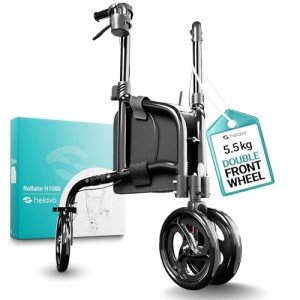When it concerns maintaining independence and mobility, people with limited mobility or specials needs typically rely on numerous assistive gadgets. One such gadget that significantly comes to the forefront of mobility aids is the seat walker. This post offers a thorough look at seat walkers-- their functions, benefits, types, and the elements to consider when choosing one.
A seat walker is a versatile mobility aid developed mostly for people who might have difficulty walking unaided. It generally features a frame with wheels, manages for support, and an integrated bench or seat, allowing users to take breaks when required. Unlike standard walkers or rollators, which only offer assistance for walking, the inclusion of a seat makes the seat walker considerably more practical for numerous users.
Seat walkers have various benefits that make them a perfect option for lots of users.
Various types of seat walkers deal with the varying requirements of users. Here is a breakdown of the most common types:

| Type | Functions | Best For |
|---|---|---|
| Fundamental Seat Walker | Easy style, frequently with a lightweight frame and very little features. | Users needing basic mobility support. |
| Heavy-Duty Seat Walker | Reinforced frame, higher weight capability, typically with bigger seats. | Individuals requiring more robust assistance. |
| Rollator with Seat | Combines seats with multi-height adjustable manages and much better maneuverability. | Users needing regular resting options. |
| Carry Seat Walker | Created for simple transport; frequently folds and has a small footprint. | Active users who travel regularly. |
Choosing a seat walker includes numerous factors to consider to guarantee it meets the user's specific needs. Here are vital aspects to bear in mind:
Seat walkers vary substantially in cost depending on their features and construct quality. While it's vital to discover a model that fulfills the user's requirements, it's equally essential to set an affordable budget.
Q1: Who ought to use a seat walker?A1: Seat walkers are perfect for people with restricted mobility due to age, injury, or chronic conditions who require additional support while walking. Q2: Are seat walkers safe?A2: Yes, seat walkers are designed with safety in mind. They generally include brakes, sturdy frames, and slip-resistant grips. Q3: How do I preserve my seat walker?A3: Regularly examine the brakes and wheels for wear and tear.
Clean the frame with a wet cloth and ensure
screws and components are tight. Q4: Can seat walkers be used outdoors?A4: Yes, many seat walkers are developed for both indoor and outdoor use, though designs with larger wheels perform much better on irregular surface areas. Q5: How do I know
which seat walker is ideal for me?A5: Consult with a healthcare service provider or occupational therapist who can evaluate your mobility needs and suggest ideal options based on your distinct scenario. The convenience and versatility of seat walkers make them a vital tool for those with mobility challenges. By offering support, stability, and a chance for rest, they empower users to remain active and independent. When choosing a seat walker, people need to consider their personal requirements, lifestyle, and safety to discover the best match for them. With the ideal seat walker, lots of users can enjoy a restored sense of flexibility, enhancing their lifestyle and maintaining their independence. In summary, whether one is navigating through the home, running errands, or delighting in fresh air in a park, a seat walker can prove to be a vital companion, transforming day-to-day activities into manageable tasks.
No Data Found!

